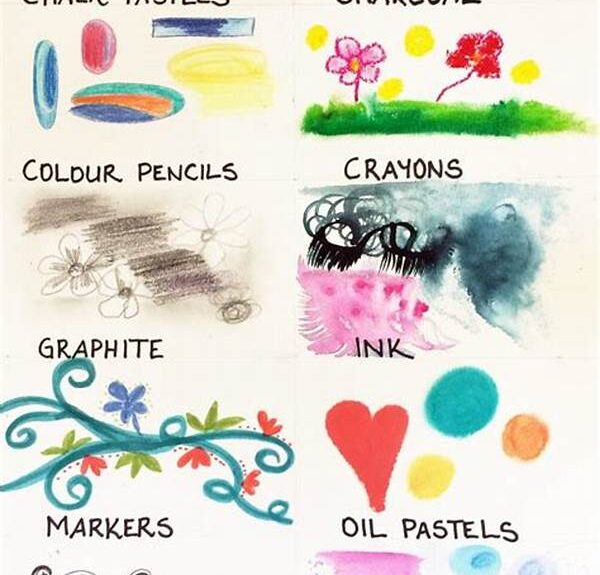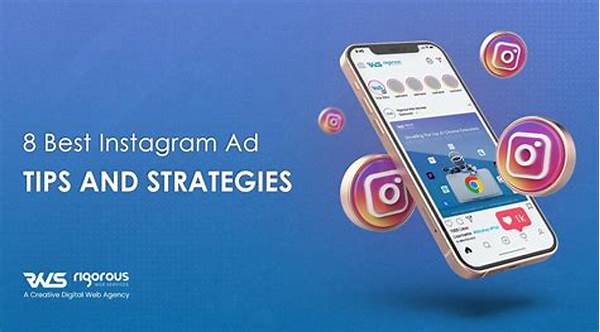In today’s competitive market, brand consistency across various platforms is more crucial than ever. As companies strive to create a cohesive image, understanding and implementing effective brand design integration techniques can make a significant difference. This article delves into various strategies and insights into snaring a unified brand perception. Whether you are a marketing novice or a seasoned professional, exploring these techniques can provide valuable guidance in maintaining and enhancing your brand’s identity.
Read Now : Virtual Digital Sketching Sessions
The Essence of Brand Design Integration
Brand design integration techniques are pivotal to establishing a strong and cohesive brand identity. They ensure that all brand elements, from visual design to messaging, align seamlessly across every customer touchpoint. This alignment is crucial for building trust with your audience, as it projects a consistent and reliable image. To start, consider how your logo, color palettes, and typography are being used across various media platforms. Are they consistent? Do they resonate with your target audience? These are questions you need to explore as you embark on the integration process. Using technology to track and analyze how your brand is perceived can offer insights into areas that may need refinement.
An effective brand design integration technique involves not just visual elements but also tone of voice and messaging style. Crafting a unified narrative that speaks to your brand’s core values and vision is essential. This narrative should be consistent in all forms of communication, whether it be social media posts, advertisements, or customer service interactions. The more harmonized these elements are, the easier it becomes for consumers to recognize and trust your brand.
To successfully implement brand design integration techniques, it’s vital to involve every stakeholder. From designers and marketers to executives, everyone should understand the brand’s goals and values. Collaborative workshops and clear communication channels can aid in cultivating a unified understanding of the brand’s direction. Remember, integration is not a one-time effort but an ongoing process that requires regular evaluation and adjustment to remain relevant in an ever-evolving market landscape.
Practical Steps to Brand Design Integration
1. Audit Current Brand Materials: Begin with a comprehensive review of existing brand elements. Identifying inconsistencies is the first step in effective brand design integration techniques.
2. Develop a Style Guide: A detailed brand style guide serves as the blueprint for brand design integration techniques. It should encompass logo usage, color schemes, typography, and messaging tone.
3. Engage Stakeholders: Collaboration with all stakeholders ensures that brand design integration techniques reflect the organization’s core values and strategic objectives.
4. Utilize Technology: Implementing tools for design consistency can streamline brand design integration techniques and ensure alignment across digital platforms.
5. Consistent Training: Regular workshops focusing on brand design integration techniques can keep team members aligned and updated on best practices.
The Role of Digital Media in Brand Design Integration
Incorporating digital media into your brand design integration techniques can significantly enhance brand reach and recognition. With consumers increasingly engaging with digital platforms, it’s essential to ensure that your brand’s online presence mirrors its offline identity. Start by focusing on your website, ensuring it embodies your brand’s style and message. The layout, color scheme, and typography should be consistent with other marketing materials. Additionally, all content, whether blog posts or product descriptions, should reflect the brand’s tone of voice.
Social media is another pivotal aspect of digital integration. Developing a strategy that highlights brand design integration techniques on platforms like Instagram, Facebook, and Twitter allows you to reach a broader audience. Content should not only be visually appealing but should also tell a story that aligns with your brand’s mission and vision. Engaging with followers in a tone that reflects your brand personality can further solidify brand recognition.
Read Now : Creating Art Without Breaking Bank
Furthermore, leveraging analytics tools can help monitor the effectiveness of your digital strategies. By understanding user behavior and engagement on digital platforms, you can refine your brand design integration techniques to better meet the needs of your audience. Regularly revisiting and adjusting your digital strategies ensures that your brand remains relevant and continues to resonate with your target market.
Transformative Outcomes of Effective Brand Design Integration
Implementing comprehensive brand design integration techniques can lead to numerous positive outcomes. Firstly, it fosters brand loyalty. When customers repeatedly encounter a consistent and reliable brand, they are more likely to develop trust and remain loyal. Secondly, it enhances brand recognition. A seamless and well-integrated brand appearance allows customers to instantly recognize and remember your brand amidst a sea of competitors.
Thirdly, effective brand design integration techniques contribute to improved customer experience. When all brand elements, from visual design to communication style, are cohesive, it creates a smooth and enjoyable journey for the customer. This satisfaction often translates into increased customer retention and positive word-of-mouth referrals.
Moreover, companies that wield strong brand design techniques often find that they enjoy a competitive edge in the market. Their unified brand identity stands out, making it easier to convey their unique value proposition. Finally, a well-integrated brand can enhance internal culture. Employees who are aligned with the brand’s identity and values are more likely to feel motivated and engaged, resulting in higher productivity and innovation.
Challenges and Solutions in Brand Design Integration
While the benefits of brand design integration techniques are numerous, challenges can arise. One potential challenge is resistance to change within the organization. It’s crucial to communicate the importance and advantages of integration to gain buy-in from all team members. Another challenge is maintaining consistency as the brand expands across new platforms and markets. It’s essential to have a flexible but comprehensive style guide that can adapt to new situations without compromising the brand’s core identity.
Investing in brand management tools can also be a viable solution. These tools help monitor brand consistency across all platforms, providing analytics that can guide improvement efforts. Encouraging continuous learning and adaptation among team members ensures that everyone stays abreast of best practices and market trends. By addressing these challenges proactively, brands can successfully integrate their design across all consumer touchpoints.
The Continuous Journey of Brand Design Integration
Brand design integration techniques are not a one-time project but rather an ongoing endeavor. As market trends evolve and consumer preferences shift, brands must remain agile and ready to adapt. Regular evaluations of branding efforts and openness to innovation are key to maintaining a consistent and relevant brand presence.
By understanding the importance of integrating all aspects of brand design, companies can create a cohesive and compelling brand narrative. This alignment not only benefits external perceptions but also strengthens internal company culture, fostering a unified vision and purpose. A brand that is well-integrated is well-positioned to thrive in the dynamic marketplace, making brand design integration techniques an essential investment for long-term success.



